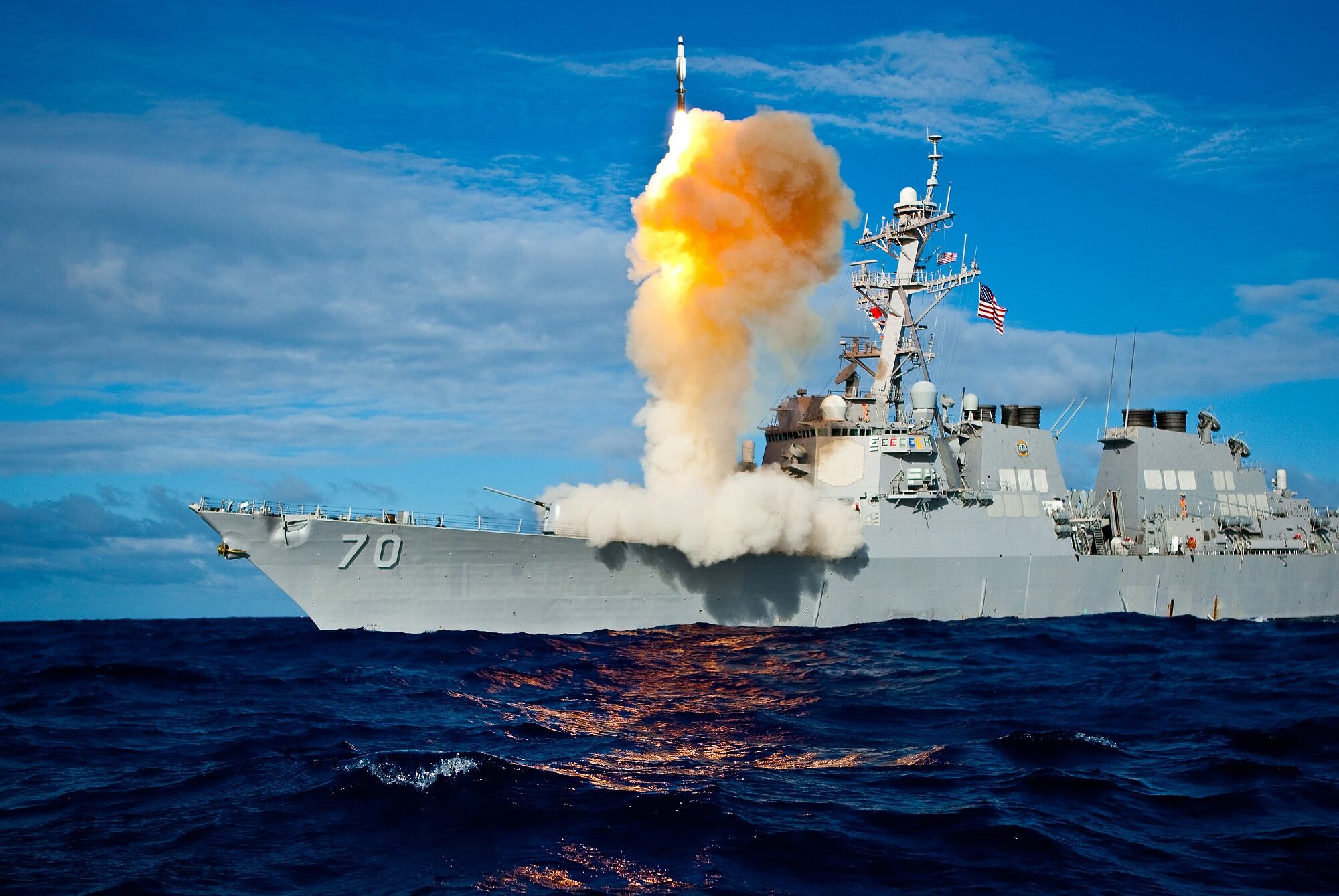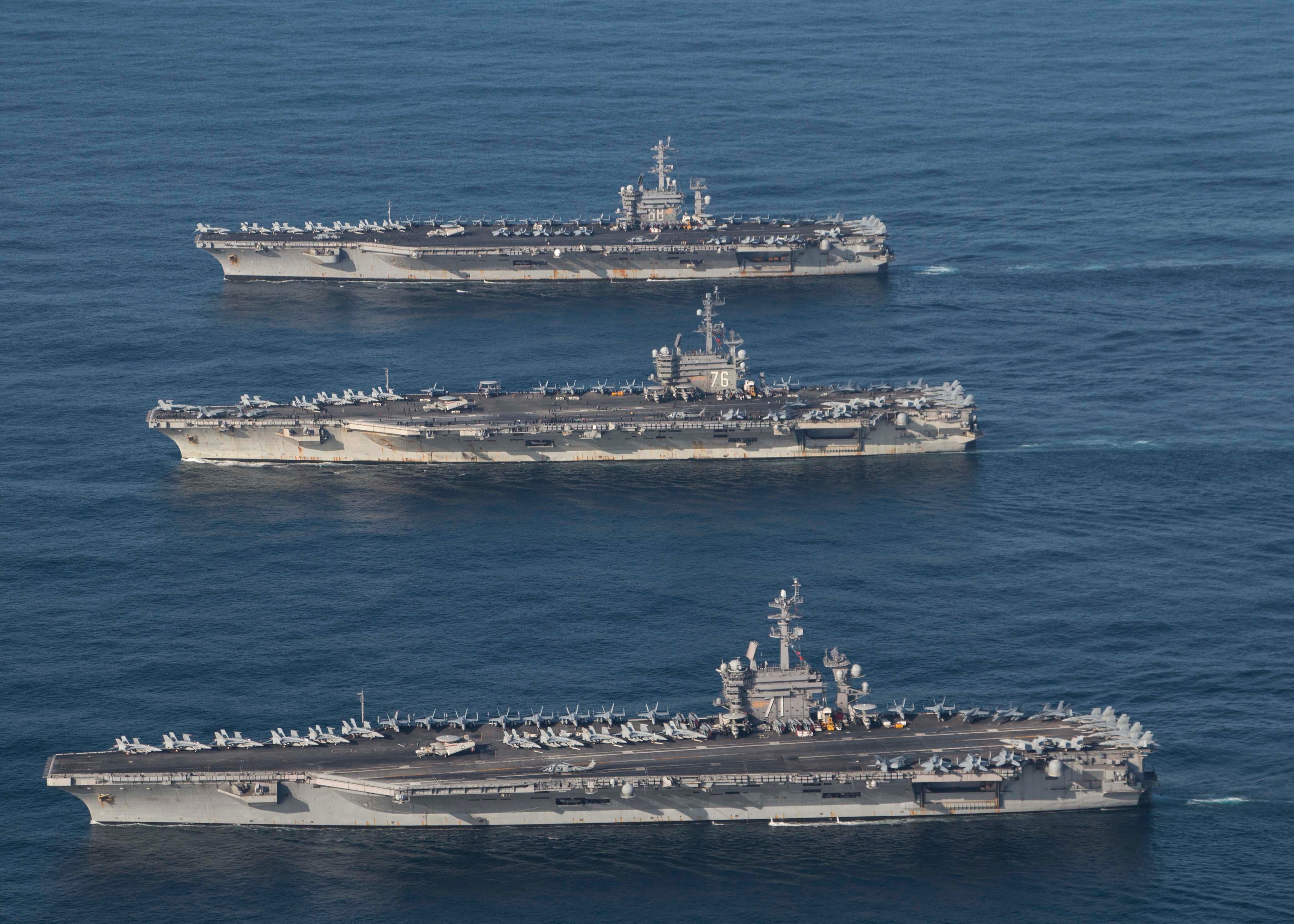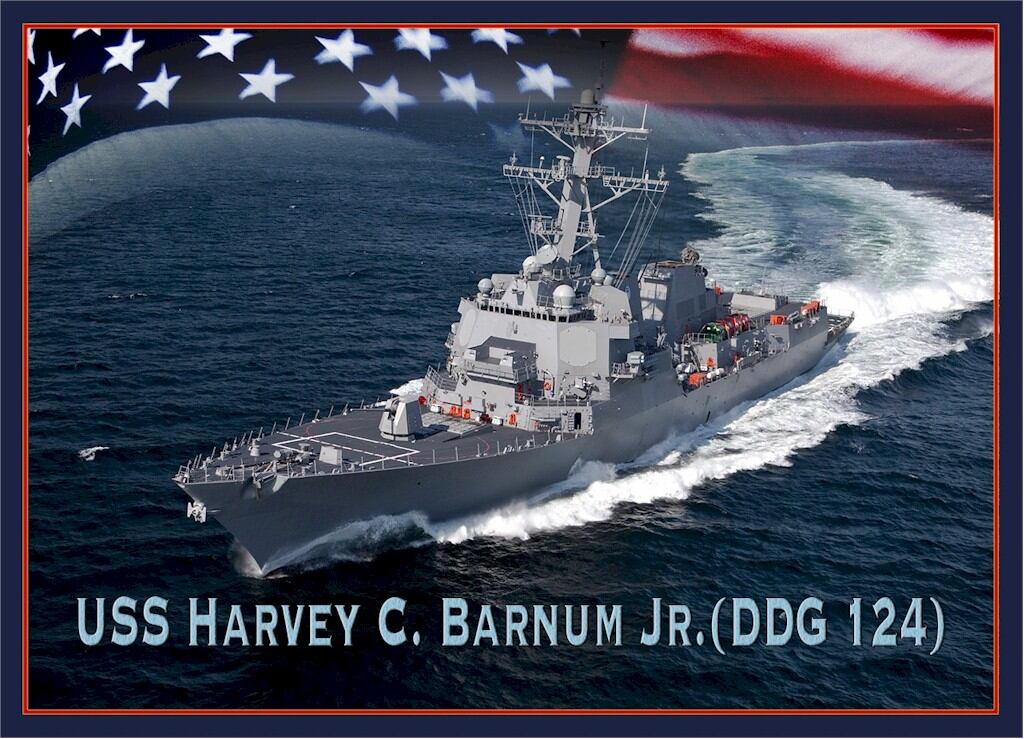WASHINGTON ― Tensions on the Korean Peninsula were at an all-time high.
North Korea was preparing to launch seven ballistic missiles, aiming for major advances in its long-range strike capabilities. The Japanese government was furious, and intelligence was warning that the North Korean government was preparing a nuclear test. Military strikes or even war, it seemed, was a distinct possibility.
And war it might have been if the U.S. hadn’t already been bogged down with 140,000 troops deployed to Iraq in a war that was spinning out of control in the wake of the bombing of a holy Shia mosque in Samarra at the hands of Sunni militants.
With the Bush administration staring a massive policy disaster in the face, the country wasn’t going to stomach even the potential for a major conflict with North Korea.
So instead the Bush administration turned to the Navy. During the July 2006 crisis, a budding capability in the fleet’s surface force was brought to bear in a real-world threat environment for everyone to see. Sea-based ballistic missile defense was still in its infancy ― the destroyer Curtis Wilbur had performed the world’s first ballistic missile defense patrol in 2004. But with North Korea’s tests looming, newly upgraded destroyers were dispatched to patrol the Sea of Japan, waiting for then-North Korean leader Kim Jong Il to make his move.
It seemed, at the time, like a major victory for the surface fleet. In the nation’s time of need, with air and ground forces bogged down in Iraq and Afghanistan, Aegis destroyers built to employ Cold War-era technologies designed to defeat the Soviet air threat had landed on a new mission that would justify the lavish expense of maintaining the world’s most advanced fleet for years to come.
But today, the world is different.
RELATED

Twelve years since the 2006 crisis on the Korean Peninsula, the ballistic missile defense, or BMD, threat has multiplied just as the Pentagon predicted it would ― but other threats have also cropped up. The threats from a resurgent Russia and rising China ― which is cranking out ships like it’s preparing for war ― have put enormous pressure on the now-aging fleet. Standing requirements for BMD patrols have put increasing strain on the U.S. Navy’s surface ships.
The Navy now stands at a crossroads. BMD, while a burden, has also been a cash cow that has pushed the capabilities of the fleet exponentially forward over the past decade. The game-changing SPY-6 air and missile defense radar destined for DDG Flight III, for example, is a direct response to the need for more advanced BMD shooters. But a smaller fleet, needed for everything from anti-submarine patrols to freedom-of-navigation missions in the South China Sea, routinely has a large chunk tethered to BMD missions.

“Right now, as we speak, I have six multimission, very sophisticated, dynamic cruisers and destroyers ― six of them are on ballistic missile defense duty at sea,” Chief of Naval Operations Adm. John Richardson said during an address at the recent U.S. Naval War College’s Current Strategy Forum. “You have to be in a tiny little box to have a chance at intercepting that incoming missile. So we have six ships that could go anywhere in the world, at flank speed, in a tiny little box, defending land.”
And for every six ships the Navy has deployed in a standing mission, it means 18 ships are in various stages of the deployment cycle preparing to relieve them.
The Pentagon, led by Defense Secretary Jim Mattis, wants the Navy to be more flexible and less predictable ― “dynamic” is the buzzword of moment in Navy circles. What Richardson is proposing is moving standing requirements for BMD patrols away from ships underway and all the associated costs that incurs, and toward fixed, shore-based sites, and also surging the Navy’s at-sea BMD capabilities when there is an active threat (as was the case in July 2006 and again in 2017 during North Korean leader Kim Jong Un’s spree of ballistic missile tests).
RELATED

In a follow-up response to questions posed on the CNO’s comments, Navy spokesman Cmdr. William Speaks said the Navy’s position is that BMD is an integral part of the service’s mission, but where long-term threats exist, the Navy should “consider a more persistent, land-based solution as an option."
“This idea is not about the nation’s or the Navy’s commitment to BMD for the U.S. and our allies and partners ― the Navy’s commitment to ballistic missile defense is rock-solid,” Speaks said. “In fact, the Navy will grow the number of BMD-capable ships from 38 to 60 by 2023, in response to the growing demand for this capability.
“The idea is about how to best meet that commitment. In alignment with our national strategic documents, we have shifted our focus in an era of great power competition ― this calls us to think innovatively about how best to meet the demands of this mission and optimize the power of the joint force.”
Unintended consequences
While the idea of saving money by having fixed BMD sites and freeing up multimission ships is sensible, it may have unintended consequences, said Bryan McGrath, a retired destroyer skipper and owner of the defense consultancy The FerryBridge Group.
“The BMD mission is part of what creates the force structure requirement for large surface combatants,” McGrath said on Twitter after Defense News reported the CNO’s comments. “Absent it, the number of CG’s and DDG’s would necessarily decline. This may in fact be desirable, depending on the emerging fleet architecture and the roles and missions debate underway. Perhaps we need more smaller, multi-mission ships than larger, more expensive ones.
“But it cannot be forgotten that while the mission is somewhat wasteful of a capable, multi-mission ship, the fact that we have built the ships that (among other things) do this mission is an incredibly good thing. If there is a penalty to be paid in peacetime sub-optimization in order to have wartime capacity--should this not be considered a positive thing?”
McGrath went on to say that the suite of combat systems that have been built into Aegis have been in response to the BMD threat. And indeed, the crown jewels of the surface fleet ― Aegis Baseline 9 software, which allows a ship to do both air defense and BMD simultaneously; the Aegis common-source library; the forthcoming SPY-6; cooperative engagement ― have come about either in part or entirely driven by the BMD mission.
RELATED

The earliest versions of the Arleigh Burke-class destroyers, the Flight I that lacks a helicopter hanger, would all be decommissioned or sold to another country by now if not for the BMD mission. That means the much-bemoaned 275-ship Navy would be even smaller today if not for the mission.
The tradeoffs for taking up the BMD mission have also been well-known for some time.
Writing in the U.S. Naval Institute’s Proceedings magazine in 2009, just after then-President Barack Obama announced he was preparing to forward-deploy Navy assets to Europe to provide BMD there, retired Rear Adm. Ben Wachendorf laid out some of the challenges with the mission.

“Navy BMD-capable combatants are multi-mission warships. When assigned a 24/7 BMD mission, their ability to maneuver over large areas will likely be restricted. It is also likely that the effectiveness of the ship’s other combat capabilities will tend to degrade. While that may not have a direct impact on the ship’s ability to execute the BMD mission, the deterioration certainly has a negative impact on other missions to which she may be assigned.
“There is also a possible adverse impact on crew morale caused by the boredom of continuous defensive patrols. Good leadership can overcome many of these challenges, but they must be addressed and carefully considered in operational planning.”
Wachendorf goes on to argue that if large numbers of surface ships are assigned to the BMD mission, they wouldn’t necessarily be available for other missions.
Peer rivals
But no matter which way the cookie crumbles, the Navy is signaling that for its tasked-out surface force, something has to give.
Speaking to a crowd at his last Surface Navy Association before being forced out of his position, former surface warfare boss Vice Adm. Thomas Rowden told the crowd that sailors need more time for readiness.
“They need help, and by help, they mean time,” Rowden said of his sailors. “Time to maintain their gear, time to refresh their basic individual and team skills, and time to unwind. Time will only come from two things, or a combination of them: more ships and fewer obligations. It is hard to see things any other way.”
In other words, rapidly growing the fleet could ease the burden on the fleet, or the Navy could reduce its standing underway commitments, or a combination of both.
A Navy official who spoke on condition of anonymity, to discuss the Navy’s shifting language on BMD, acknowledged the tone had shifted since the 2000s when the Navy latched onto the mission. But the official added that the situation more than a decade later has dramatically shifted.
“The strategic environment has changed significantly since the early 2000s ― particularly in the western Pacific. We have never before faced multiple peer rivals in a world as interconnected and interdependent as we do today,” the official said. “Nor have we ever seen technologies that could alter the character of war as dramatically as those we see emerging around us. China and Russia have observed our way of war and are on the move to reshape the environment to their favor.”
In response to the threat and Defense Secretary Jim Mattis’ desire to use the force more dynamically, the Navy is looking at its options, the official said. “This includes taking a look at how we employ BMD ships through the lens of great power competition to compete, deter and win against those who threaten us.”
David B. Larter was the naval warfare reporter for Defense News.








